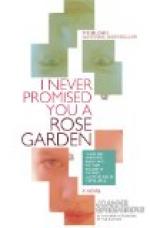If the spring is damp and mildew appears, dust with sulphur flower in a small bellows.
June. The Rose Hopper or Thrip, an active little pale yellow, transparent-winged insect that clings to the under side of the leaf, will now come if the weather is dry; dislodged easily by shaking, it immediately returns. Remedy, spraying leaves from underneath with water and applying powdered helebore with a bellows.
If Black Spot, a rather recent nuisance, appears on the leaves, spray with Bordeaux Mixture, bought of a horticultural dealer, directions accompanying.
Meanwhile the leaf worm is sure to put in appearance. This is also transparent and either brownish green, or yellow, seemingly according to the leaves upon which it feeds. Remedy, if they won’t yield to helebore (and they seldom do unless very sickly), brush them off into a cup. An old shaving brush is good for this purpose, as it is close set but too soft to scrape the leaf.
June 15. When the roses are in bloom, stop all insecticides. There is such a thing as the cure being worse than the disease, and a rose garden redolent of whale-oil soap and phosphates and encrusted with helebore and Bordeaux Mixture has a painful suggestion of a horticultural hospital.
Now is the time for the Rose Chafer, a dull brownish beetle about half an inch long, who times his coming up out of the ground to feast upon the most fragrant and luscious roses. These hunt in couples and are wholly obnoxious. Picking into a fruit jar with a little kerosene in the bottom is the only way to kill them. In one day last season Evan came to my rescue and filled a quart jar in two hours; they are so fat and spunky they may be considered as the big game among garden bugs, and their catching, if not carried to an extreme, in the light of sport.
July. See that all dead flowers are cut off and no petals allowed to mould on the ground. Mulch with short grass during hot, dry weather, and use liquid manure upon hybrid teas and teas every two weeks, immediately after watering or a rain. Never, at any season, allow a rose to wither on the bush!
August. The same, keeping on the watch for all previous insects but the rose beetle; this will have left. Mulch hybrid perpetuals if a dry season, and give liquid manure for the second blooming.
September. Stir the ground after heavy rains, and watch for tendencies of mould.
October. The same.
November. Begin to draw the soil about roots soon after black frost, and bank up before the ground freezes, but do not add straw, litter, or manure in the trenches until the ground is actually frozen, which will be from December first onward, except in the case of teas, which should be covered gradually until the top is reached.
By this you will judge, Mary Penrose, that a rosary has its labours, as well as pleasures, and that like all other joys it is accompanied by difficulties. Yet you can grow good roses if you will, but the difficulty is that most people won’t. I think, by the way, that remark belongs to Dean Hole of fragrant rose-garden memory, and of a truth he has said all that is likely to be spoken or written about the rose on the side of both knowledge and human fancy for many a day.




